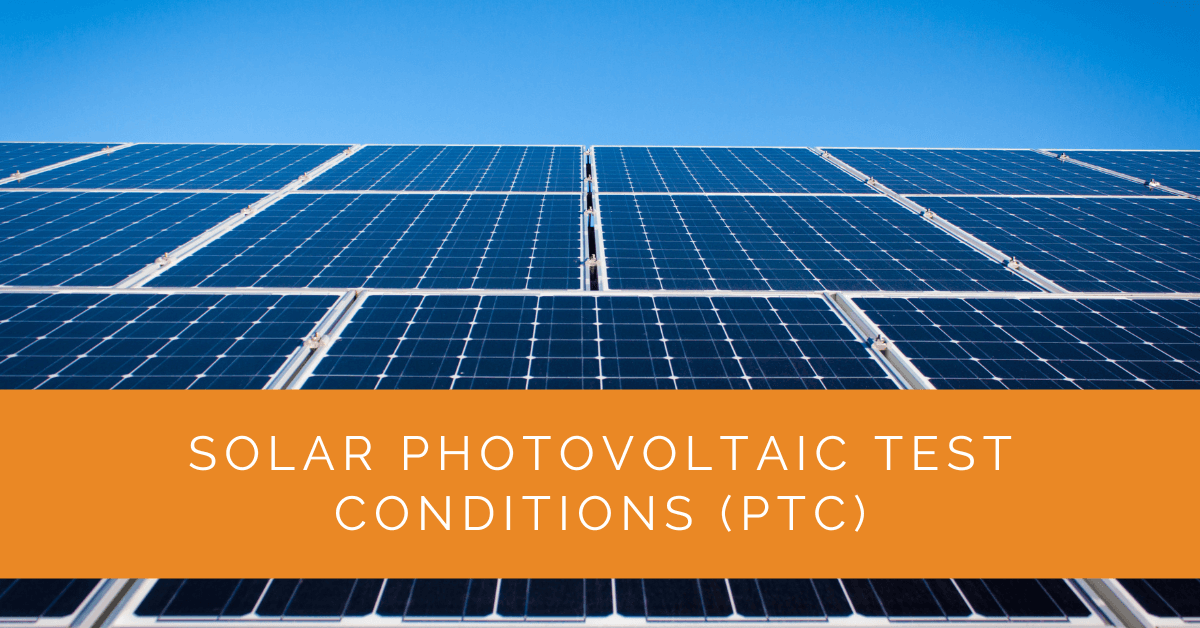Understanding the intricacies of solar panel performance evaluation is crucial in the dynamic realm of solar energy. Two primary test conditions, Standard Test Conditions (STC) and Photovoltaic Test Conditions (PTC) ratings, are pivotal in this assessment. This article aims to provide a comprehensive and informative exploration of PTC ratings, shedding light on their profound significance in deciphering the true potential of solar panels under real-world conditions.
Contents
- 1 Key Takeaways
- 2 Exploring PTC Ratings: A Real-World Perspective
- 3 Simulating Practical Usage Conditions
- 4 Advantages of PTC Ratings Over STC
- 5 Unveiling the Role of Operating Cell Temperature
- 6 The Crucial Influence of Wind Speed
- 7 Choosing Wisely: The Power of PTC Ratings
- 8 Aligning Specifications with Real-World Expectations
- 9 Unveiling the Science Behind PTC Ratings
- 10 Case Study: Optimizing Solar Panel Performance with PTC Ratings in a Commercial Installation
- 11 Expert Insights From Our Solar Panel Installers About Solar Photovoltaic Test Conditions (PTC)
- 12 Experience Solar Excellence with Us!
- 13 Conclusion
- 14 FAQ
Key Takeaways
- PTC ratings transcend lab settings, replicating actual operating conditions with parameters like ambient temperature and wind speed, offering a more accurate depiction of solar panel performance.
- PTC ratings bridge the gap between STC and practical usage scenarios, accounting for cell temperature, wind speed, and geographic variations.
- Prioritizing PTC-rated panels empowers users to select solar modules that align with their region’s environmental conditions, paving the way for more reliable and efficient solar energy solutions.
Exploring PTC Ratings: A Real-World Perspective
Photovoltaic Test Conditions (PTC) have emerged as a transformative force within the realm of solar panel evaluation. Unlike the more standardized STC, PTC ratings encompass a broader spectrum of factors designed to replicate the authentic operating environment of solar panels. Under PTC conditions, panels undergo specific parameters, including a cell temperature of 25°C, an irradiance level of 1,000 W/m², and a wind speed of 1 m/s, situated 10 meters above ground level.
Simulating Practical Usage Conditions
What sets PTC apart is its ability to emulate the real-world scenarios encountered by solar panels when deployed in the field. While STC provides a controlled and consistent environment for assessment, PTC ratings take a holistic approach. PTC ratings accurately reflect panel performance across diverse geographic and climatic landscapes by integrating parameters such as ambient temperature and wind speed. This attribute is particularly significant for applications on a larger scale, such as utility-scale installations, where operational conditions vary significantly.
Advantages of PTC Ratings Over STC
As the solar energy sector expands, the limitations of relying solely on STC ratings become evident. The gap between STC conditions and the dynamic real-world environment widens significantly when considering elements such as cell temperature. Operational conditions under which solar panels function seldom align with the standardized 25°C parameter. PTC ratings bridge this gap by accounting for these deviations, providing a more precise representation of power output.
Unveiling the Role of Operating Cell Temperature
Operating Cell Temperature (OCT) is vital in comprehending the intricacies of solar panel performance. The divergence between laboratory conditions and real-world settings becomes apparent when considering the impact of ambient temperature on solar cells. In contrast to the controlled climate of laboratories, outdoor conditions can be unpredictable and diverse. PTC ratings recognize this variability, ensuring that solar modules are assessed within the context of their anticipated operational temperatures. This nuanced approach adds an extra layer of accuracy, particularly in regions characterized by extreme climate fluctuations.

The Crucial Influence of Wind Speed
Wind speed, often underestimated, exerts a substantial influence on solar panel performance. Panels positioned at varying heights above ground experience differing wind speeds, significantly affecting heat dissipation and overall efficiency. PTC ratings acknowledge this dynamic interplay, particularly pertinent for solar installations at varying elevations or rooftop setups.
Choosing Wisely: The Power of PTC Ratings
As the solar landscape matures, making informed choices becomes imperative. While STC ratings retain relevance, they might not provide a comprehensive view of a panel’s capabilities in real-world conditions. By placing a premium on panels with PTC ratings, consumers and industry professionals can gain invaluable insights into the genuine performance of solar panels under diverse conditions.
Aligning Specifications with Real-World Expectations
Selecting a solar panel necessitates aligning the module’s specifications with expected operational conditions. PTC ratings facilitate a more nuanced evaluation, empowering users to select panels that harmonize seamlessly with their geographical location’s distinct climatic and environmental factors.
Unveiling the Science Behind PTC Ratings
The seemingly straightforward distinction between STC and PTC ratings belies the intricate scientific underpinnings governing these assessments. Establishing and standardizing PTC ratings involves collaborative efforts from organizations like the National Renewable Energy Laboratory (NREL) in conjunction with the California Energy Commission. This synergy guarantees that PTC ratings are rooted in practicality and grounded in the realities of field performance.
Case Study: Optimizing Solar Panel Performance with PTC Ratings in a Commercial Installation
Background
At Solar Panels Network USA, we aim to provide reliable and efficient solar solutions that meet the specific needs of our clients. Understanding the importance of accurate performance evaluation, we integrate Photovoltaic Test Conditions (PTC) ratings in our project assessments. This case study highlights the successful implementation of PTC-rated solar panels in a commercial installation, demonstrating the advantages of real-world performance metrics.
Project Overview
A commercial client approached us to design a solar power system that maximizes energy production while operating efficiently under varying environmental conditions. The primary goal was to ensure the solar panels performed optimally in the region’s specific climate, characterized by high temperatures and fluctuating wind speeds. To achieve this, we selected PTC-rated solar panels, which provide a realistic assessment of performance under practical usage scenarios.
Implementation
- Selecting PTC-Rated Panels: We carefully selected solar panels with high PTC ratings, considering factors such as cell temperature and wind speed that closely match the client’s location. These panels were chosen for their ability to maintain high efficiency even under the region’s challenging climatic conditions.
- Accurate Installation Techniques: Proper installation was crucial to leveraging the benefits of PTC-rated panels. Our team followed precise installation guidelines, ensuring that the panels were positioned and angled to maximize exposure to sunlight while taking into account the local wind patterns for optimal cooling.
- Ongoing Monitoring and Maintenance: We implemented a comprehensive monitoring system to track the performance of the solar panels continuously. Regular maintenance checks were conducted to ensure that the panels remained clean and free from obstructions, and to verify that all electrical connections were secure and functioning correctly.
Results
- Enhanced Performance Under Real-World Conditions: The PTC-rated panels demonstrated superior performance compared to standard panels, particularly during high-temperature periods and variable wind conditions. The accurate assessment of these conditions allowed the system to operate efficiently throughout the year.
- Improved Energy Yield: By accurately reflecting the real-world operating environment, the PTC ratings ensured that the panels delivered higher energy yields. This resulted in increased overall energy production, meeting the client’s energy demands more effectively.
- Cost Efficiency and ROI: The reliable performance of the PTC-rated panels led to significant cost savings on energy bills and reduced maintenance costs. The client achieved a faster return on investment due to the improved energy efficiency and lower operational expenses.
- Client Satisfaction: The client expressed high satisfaction with the solar installation, noting the importance of PTC ratings in ensuring reliable and efficient performance. The success of the project reinforced the value of using real-world performance metrics in solar panel selection and installation.
Summary
This case study illustrates the critical role of Photovoltaic Test Conditions (PTC) ratings in optimizing solar panel performance for commercial installations. By providing a realistic assessment of panel efficiency under actual operating conditions, PTC ratings enable better decision-making and enhanced energy production. At Solar Panels Network USA, our commitment to leveraging accurate performance metrics ensures that our clients receive reliable and efficient solar solutions tailored to their specific environmental conditions.
Expert Insights From Our Solar Panel Installers About Solar Photovoltaic Test Conditions (PTC)
PTC ratings provide a realistic view of solar panel performance by considering factors like ambient temperature and wind speed, which are often overlooked in lab tests.
Senior Solar Installer
Choosing panels with PTC ratings helps us ensure that our installations perform efficiently under real-world conditions, especially in regions with fluctuating climates.
Lead Solar Technician
Understanding the influence of operating cell temperature and wind speed through PTC ratings allows us to make more informed decisions, ultimately enhancing the reliability and efficiency of our solar systems.
Chief Solar Engineer
Experience Solar Excellence with Us!
Trust in Solar Panels Network USA, where our seasoned experts deliver top-quality solar solutions for homes and businesses nationwide. With a legacy of countless successful installations and a commitment to sustainable energy, we’re your reliable partner in the solar journey. Ready for a brighter, eco-friendly future? Call us now at (855) 427-0058 and harness the power of the sun!
Conclusion
In the ever-evolving landscape of solar energy, the pursuit of precision in performance assessment remains unceasing. As solar panels continue to shape the trajectory of renewable energy, embracing a multifaceted approach becomes imperative. PTC ratings emerge as a beacon of authenticity, offering a window into how panels truly fare when subjected to the rigors of real-world conditions. By integrating PTC ratings as a primary benchmark, we unlock the full potential of solar energy and steer the industry toward reliable solutions and attuned to the intricate demands of practicality. The transition from STC to PTC represents more than a mere shift in parameters; it symbolizes a journey from abstraction to authenticity, a journey well worth embarking upon.
FAQ
What does PTC mean in solar?
PTC stands for “Photovoltaic Test Conditions.” It refers to a set of parameters used to evaluate the performance of solar panels under conditions that closely simulate real-world usage. PTC ratings offer a more accurate reflection of a solar panel’s efficiency in practical scenarios.
What is the difference between PTC and STC?
PTC (Photovoltaic Test Conditions) and STC (Standard Test Conditions) are two sets of parameters used to assess solar panel performance. While STC provides standardized laboratory conditions with fixed parameters, PTC considers factors like ambient temperature, wind speed, and more, replicating real-world situations for a more realistic evaluation.
How do you calculate solar PTC?
Calculating solar PTC involves considering parameters such as cell temperature, irradiance, and wind speed. PTC ratings are standardized by organizations like the National Renewable Energy Laboratory (NREL) and are typically provided by manufacturers. These ratings provide insights into a solar panel’s performance under conditions that mimic actual field usage, enhancing accuracy in performance assessment.
About the Author
Solar Panels Network USA stands at the forefront of solar energy solutions, driven by a team of seasoned solar engineers and energy consultants. With over decades of experience in delivering high-quality solar installations and maintenance, we are committed to promoting sustainable energy through customer-centric, tailored solutions. Our articles reflect this commitment, crafted collaboratively by experts to provide accurate, up-to-date insights into solar technology, ensuring our readers are well-informed and empowered in their solar energy decisions.

